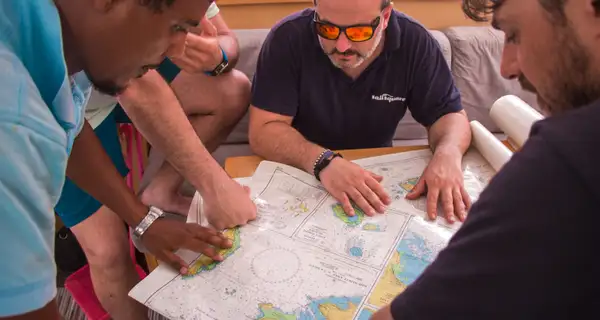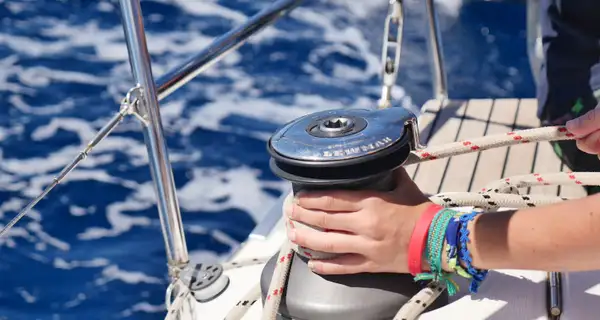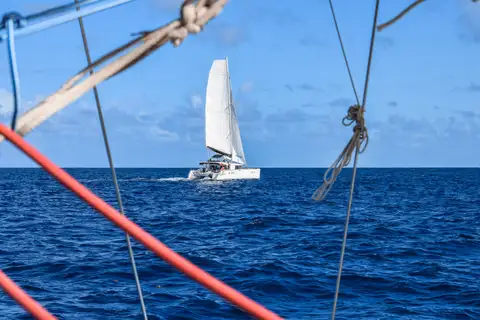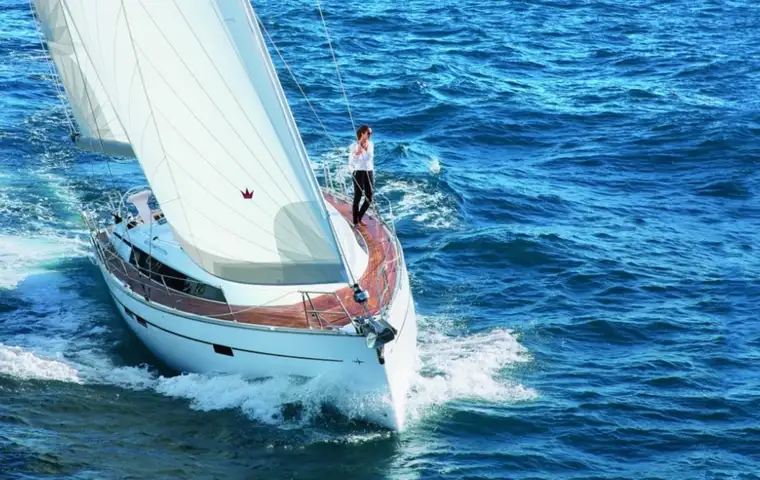
Guide to facing the ocean by boat
Have you always dreamed of having such an adventure without ever daring to do it? Sailing across the Atlantic has never been easier.
Initially reserved for experienced sailors, opportunities to experience "the adventure of a lifetime" have multiplied in recent years, making the Atlantic crossing an accessible experience not only for experienced skippers and sailors, but also for enthusiasts of adventure travel and out-of-the-ordinary experiences.
It is now very common to find boarding offers from skippers and shipowners that allow travelers from all over the world to come aboard to share an Atlantic ocean crossing...
The Atlantic crossing is a voyage that should be on your "bucket list" because it is an extraordinary human and learning experience made up of true moments of adventure that you will remember for a lifetime.
Highlighted crossings
What to know before embarking on an ocean voyage

The most popular route
The classic route to cross the Atlantic by sailboat begins in Europe and ends in the Caribbean or more rarely somewhere else in Central America.
A common example of a transatlantic crossing departing from the Canary Islands with a possible stop in Cape Verde and landing in the Antilles.
The distance of the crossing from the Canary Islands to the Caribbean is about 2800-3000 nautical miles, depending on the exact route and specific destinations.

Duration of an Atlantic crossing
The duration of this type of crossing is about 20 days. However, the duration depends on the trade winds and weather conditions during the voyage.
In addition to the time spent sailing, several days will be needed for boat preparation, fuel and food supplies, and last but not least, getting to know the crew and the roles on board.

When to cross the Atlantic Ocean
In general, the best time to cross the ocean is from late November to late January, when the trade winds are calmer and weather conditions at sea are more favorable.
If, on the other hand, you prefer to cross the Atlantic from the Caribbean or the Americas, we recommend traveling during the summer months to enjoy lighter winds.

Weather, wind and sea in the Atlantic Ocean
During most of the year, especially from November to April, trade winds are encountered in the North Atlantic. These winds blow steadily from east to west, promoting relatively stable and continuous sailing to the Caribbean. Wind intensity usually varies between 15 and 30 kn (knots).
Along the route, several ocean currents are encountered. The Canary Current, which flows from northwest to southeast, can ease the route southward. In addition, the North Atlantic Equatorial Current is important for the middle part of the voyage, carrying sailors westward.
The waves in the ocean are often high and very different from those in the Mediterranean; it will take a few days to get used to the constant rolling and pitching of the boat.
During navigation, thunderstorms and "squalls" will be encountered, forcing the crew to adjust and reduce sails and make deviations of a few degrees to avoid the most disturbed and windy areas.

What to do on board during the Atlantic crossing by sailboat
It has always been every sailor's dream to cross the Atlantic by boat. The first to do so was Christopher Columbus in 1492, landing in the Caribbean. Retracing the traces of history is a great privilege, especially for those who love sailing.
Life on board during this voyage is an extraordinary experience and a true adventure that you will remember for a lifetime. Be prepared to cooperate and learn how to live together on board. Participating in sailing activities is also part of the adventure. No matter whether you are an experienced sailor or a novice, if you have a thirst for adventure--this is the ideal experience for you!
While sailing, there will be moments of total relaxation where you can enjoy an exciting reading on the deck of your sailboat. At other times, you will be able to admire the extraordinary sunsets and sunrises from the ocean-we assure you that from the sea you will see them with different eyes-fishing and, with a little luck, spotting dolphins and other marine species.
But don't forget that crossing the Atlantic on a sailboat is no child's play. In this type of crossing the boat is constantly moving so you need to keep your eyes open and pay close attention.

How much does it cost to cross the Atlantic by sailboat?
Let's first say that an Atlantic crossing is not an inexpensive experience: the cost varies greatly depending on the type of boat, the number of stops and the duration; indicatively, the cost could range between 2,000 and 4,000 euros per person.
In some cases to this budget, extras such as provisions, fuel and port expenses must be added. These extras are divided among all crew members and should not exceed €1,000 per person.

Crew and Preparation
A close-knit crew at the helm of which is a skipper with various Atlantic crossing experience is essential for tackling this long voyage. In addition to sailing skills, it is essential to have navigational skills, boat maintenance skills, and knowledge of first aid at sea. Thorough preparation of the boat, including checking and maintaining all systems, is crucial before departure.
Sailing the Atlantic




11+
Show all
5 practical tips for those who want to go on a crossing
Nutrition and rest
Meals are a key time during the crossing; eating hearty, light foods frequently and getting a good night's sleep will make sailing less strenuous.
Guard shift planning
Well-planned watch shifts will ensure sustainable rhythms for the crew with moments of relaxation and rest despite any unforeseen events and emergencies on board.
Cleanliness and order on board
Keeping the boat, personal belongings, and galley clean and organized is essential to best manage such a long sailing trip.
Monitor well-being
Carefully observe the physical and emotional well-being of the crew. In case of health or food problems, act promptly and seek help if necessary.
Crew morale and team spirit
Maintaining good morale on board by encouraging mutual support, enthusiasm and optimism is critical. The skipper will organize group activities and promote moments of relaxation to relieve the stress and fatigue of the crossing.

Atlantic crossing: what characteristics do you need to have to embark?
Are you considering a unique experience by participating in an Atlantic crossing? Here's what you need to join this incredible crossing:
Passion the sea and sailing
First of all, you must love the sea and feel a strong affinity for sailing. This passion will be your guide as you cross the Atlantic.
Spirit of Adventure and Flexibility
A transatlantic is no ordinary voyage. It requires a spirit of adventure and mental flexibility....
Here is what Maxime, an adventurer like you, experienced: "In a moment of daring, I decided to sail back to France from New York. I was not a sailing expert, but I took the opportunity of a transatlantic. I sent a message to a Sailsquare skipper and a few hours later I was already packed and boarding!"
But be aware, an Atlantic crossing is no ordinary voyage! It means immersing yourself in the open sea for 15 days or more. As Maxime points out, "On board, landmarks disappear, we live at the rhythm of the sea. Without internet (or almost), without contact with the outside world. It's just the sea and our crew." The ocean will be your home and your company on this extraordinary adventure. Prepare to be captivated by the beauty and challenge of the Atlantic.
Dedication and Endurance
Atlantic crossings require dedication and endurance. You will live symbiotically with the rhythm of the sea, embracing the succession of days and nights.
Team Spirit
Each crew member is a vital part of the experience. You'll be involved in the shifts, contributing to shipboard maneuvers and ensuring the safety of the boat.
Connaissances de base en matière de voile
Even if you are not an experienced sailor, basic knowledge in sailing will help. From the simple knots used on board, to steering the boat, to sail adjustments. Needless to say, after this full immersion experience your sailing and boating skills will grow tremendously.
Atlantic crossing but not only

Atlantic Crossing: Sailboat or Catamaran
The vastness of the Atlantic Ocean tests crews' sailing skills and endurance, whether they choose to ply the waves aboard a traditional sailboat or a modern catamaran. Both vessels have advantages, offering completely different sailing experiences.
Sailing boat: strong emotions and contact with the sea
The sailboat embodies the essence of the traditional art of sailing. Atlantic crossings with a sailboat offer a more authentic experience, bringing the crew closer to the heartbeat of the ocean.
Sailing on a sailboat compared to a catamaran requires more technical skill and a thorough understanding of sailing maneuvers; the taste of sailing and strong emotions will be part of this incredible experience.
Pitching and rolling, due to the ocean swell, will be a constant during much of the sailing, which will be done mostly in lift winds (slack and stern sailing).
Catamaran: comfort and speed
Catamarans offer greater stability than monohulls, greatly reducing the effect of rolling. This results in greater crew comfort and more relaxed boat handling..
Particularly in medium to strong winds at carrying gaits, which are frequent during Atlantic crossings, the catamaran will express its full speed allowing significantly higher daily averages than a monohull with a consequent reduction in the overall duration of the crossing.
During an Atlantic crossing on a catamaran, the average daily mileage can range from about 150 to 250 nautical miles, depending on weather conditions, the size of the catamaran, and the efficiency of navigation.
How to organize sleep management during an Atlantic crossing?
Guides et conseils
Let's talk Sailsquare!



Secure payments



© 2025 Sailsquare Srl SB • All rights reserved - VAT IT07860990964







